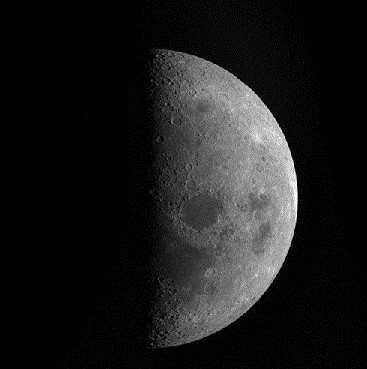ESA Goal Is Manned Lunar Mission
Four decades after the first Moon landing, our only natural
satellite remains a fascinating enigma. Specialists from Europe and
the US have been looking at ESA's proposed Lunar Lander mission to
find out how to seek water and other volatile resources. Europe is
developing the technology for the Lunar Lander mission, a precursor
voyage to the Moon in preparation for human exploration beyond low
Earth orbit.

"Our ambition is to see one day a European astronaut working on
the Moon," says ESA's Bruno Gardini. Expected to be launched in
2018, the unmanned craft will land near the lunar South Pole. "It
is the mission that will provide Europe with the planetary landing
technology of the future."
Specialists, including prestigious scientists who worked on the
Apollo program, recently gathered at ESA's ESTEC space technology
center in the Netherlands to discuss the mission. The lander's
scientific payload addresses a number of key aspects of the unique
environment on the Moon: radiation, dust, habitats and volatiles.
Volatiles, such as water, are those delicate chemical components
that under certain conditions would just disappear.
Volatiles may be readily extracted from lunar soil and provide
valuable resources such as carbon, nitrogen, phosphorus or sulphur
to aid future human exploration. Like water, these chemical
elements have been implanted by billions of years of exposure to
the solar wind and are especially likely to be found at the poles.
"To analyse the volatiles or the water that is all over the Moon in
very small quantities, we have to take samples of the materials we
find on the surface and analyse them in situ", says Bruno.
Recent missions have transformed our view of the Moon. This new
era of lunar science was well represented by Colin Pillinger.
Having begun his career analysing samples of moon rock for the
Apollo program, he is now professor of planetary science at the
Open University in the UK. "We certainly don't know where the water
comes from until we get down there and do more experiments. That's
why the Lunar Lander is so important," he said.

"I play the devil's advocate," says Larry Taylor, from the
University of Tennessee, a scientist who guided the US astronauts
in the quest for samples on the Moon. "I'm giving my knowledge
about lunar soil, something that I've been working on for 40 years.
I have a different perspective, so I'm saying to the engineers: are
you sure you are going to find this?"
Finding the right landing site is also crucial for science. "You
have to go to the exact places where we think these valuable
resources might be concentrated," says Prof. Pillinger. ESA has
selected the South Pole as a landing site for two main reasons.
First, there are long periods of illumination that would allow the
lander to rely on solar power alone.
"We will go to a very different place from the equatorial
regions explored during the Apollo era," Bruno said, "giving the
scientists the opportunity to do new experiments and get completely
new insights."
 ANN's Daily Aero-Term (04.20.24): Light Gun
ANN's Daily Aero-Term (04.20.24): Light Gun Aero-News: Quote of the Day (04.20.24)
Aero-News: Quote of the Day (04.20.24) ANN's Daily Aero-Linx (04.21.24)
ANN's Daily Aero-Linx (04.21.24) Aero-News: Quote of the Day (04.21.24)
Aero-News: Quote of the Day (04.21.24) ANN's Daily Aero-Term (04.21.24): Aircraft Conflict
ANN's Daily Aero-Term (04.21.24): Aircraft Conflict




